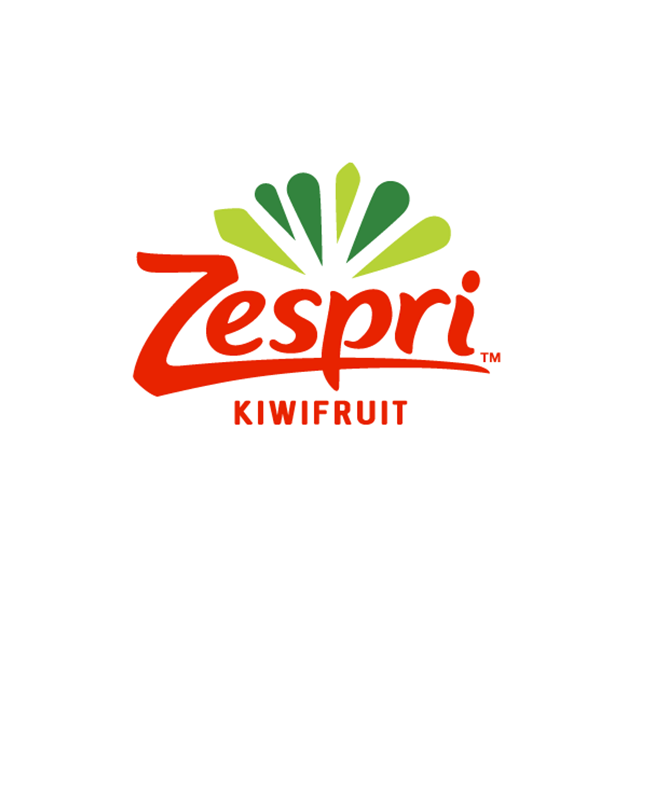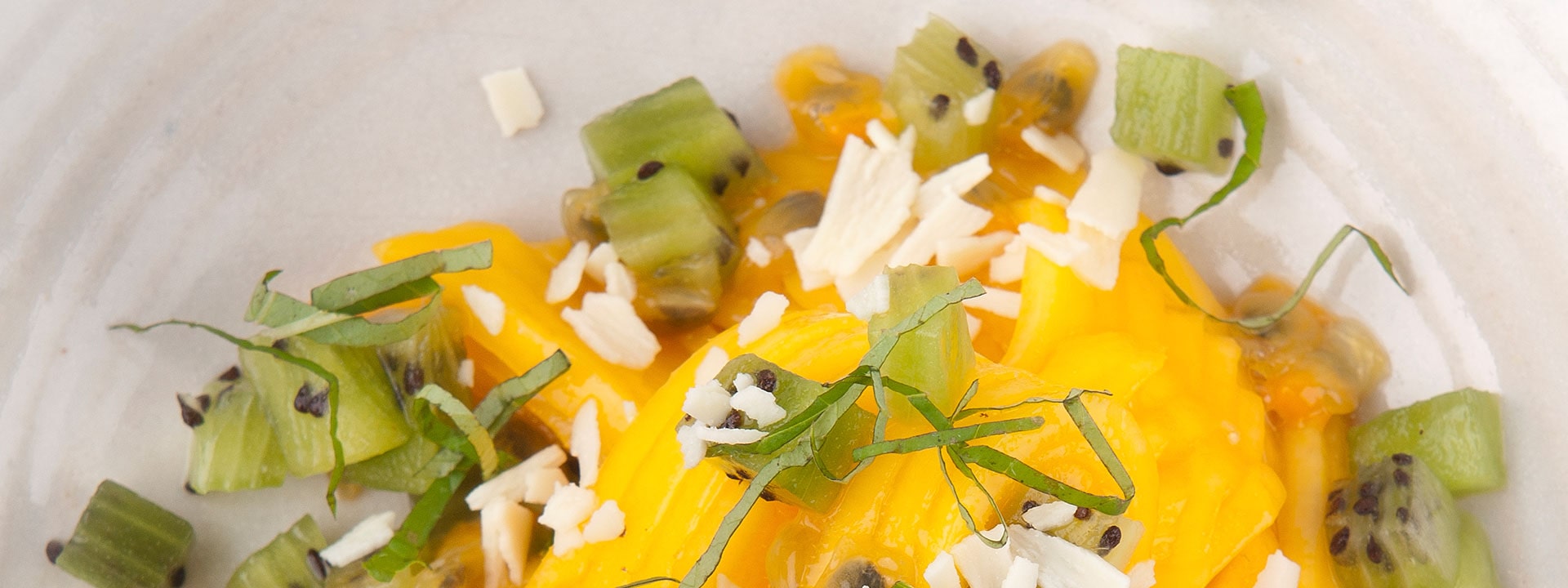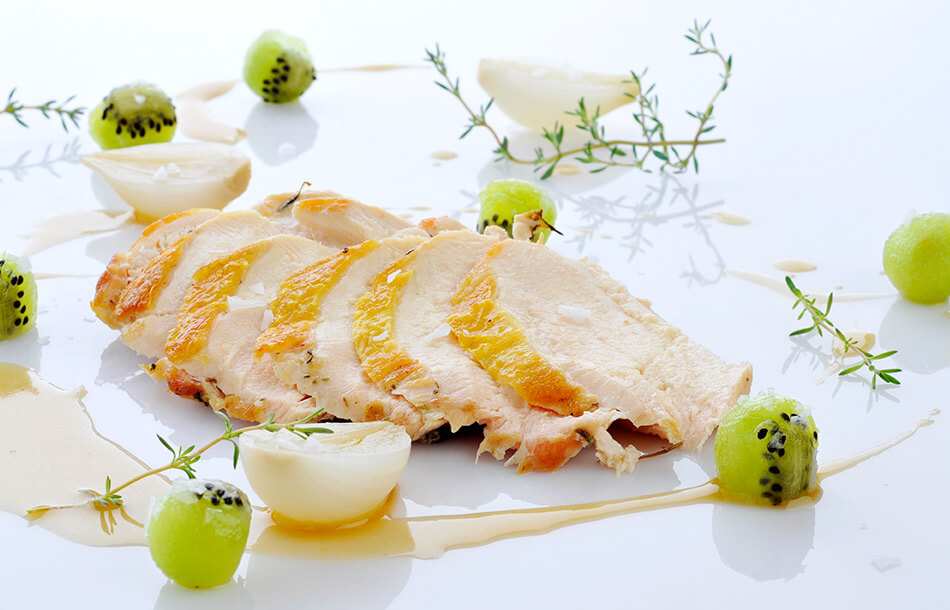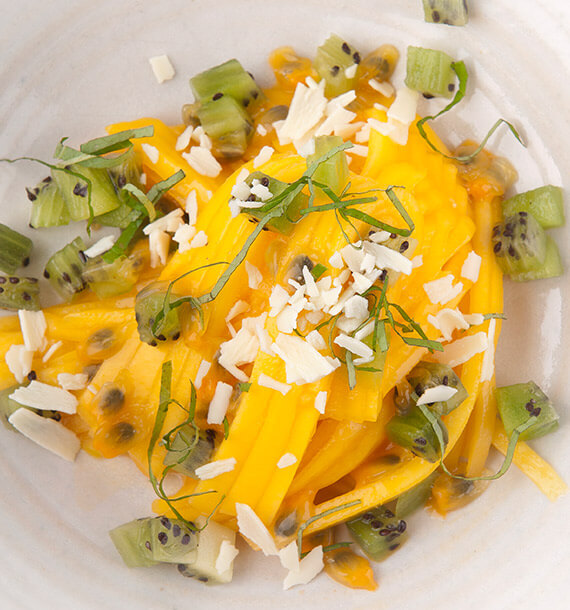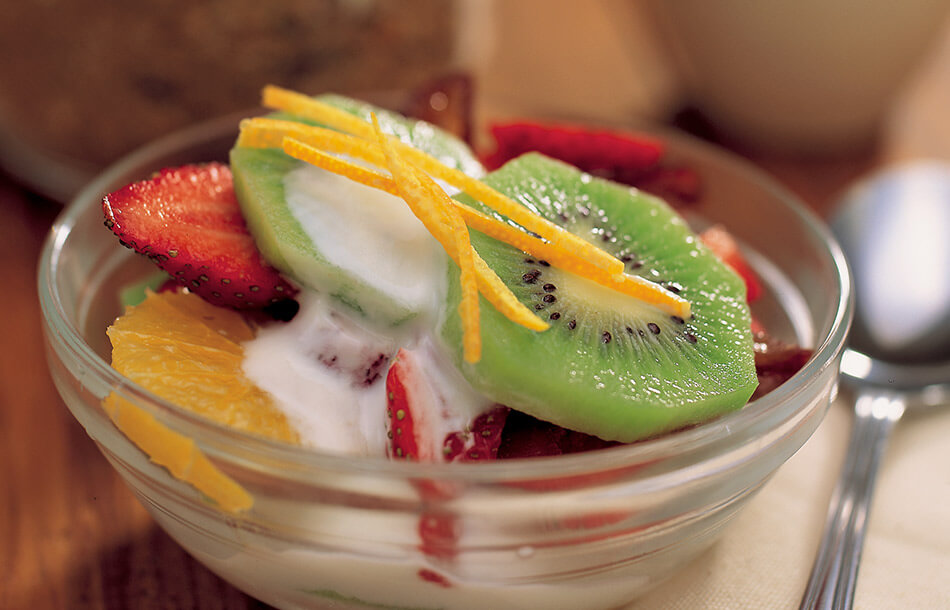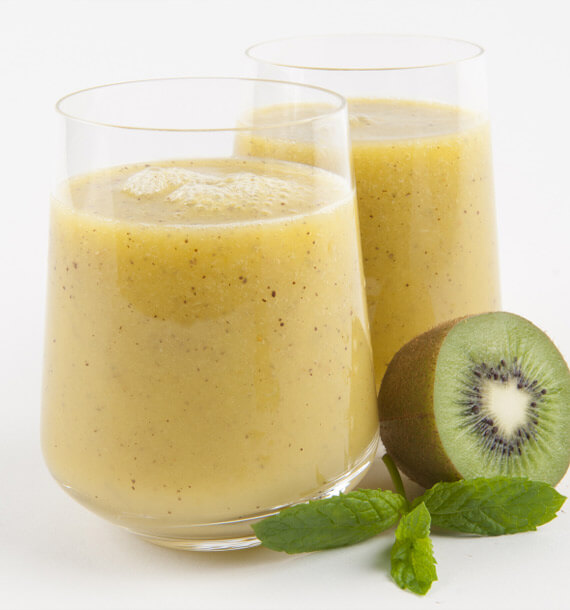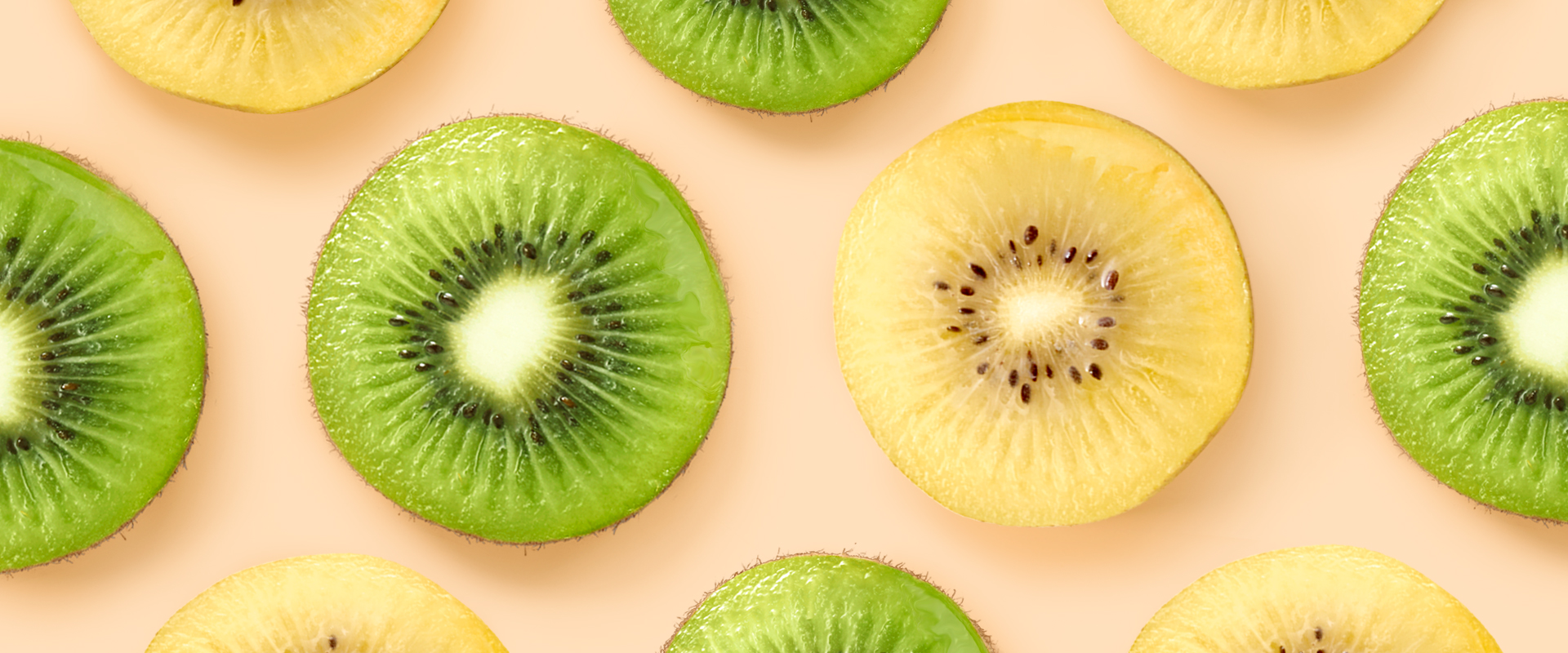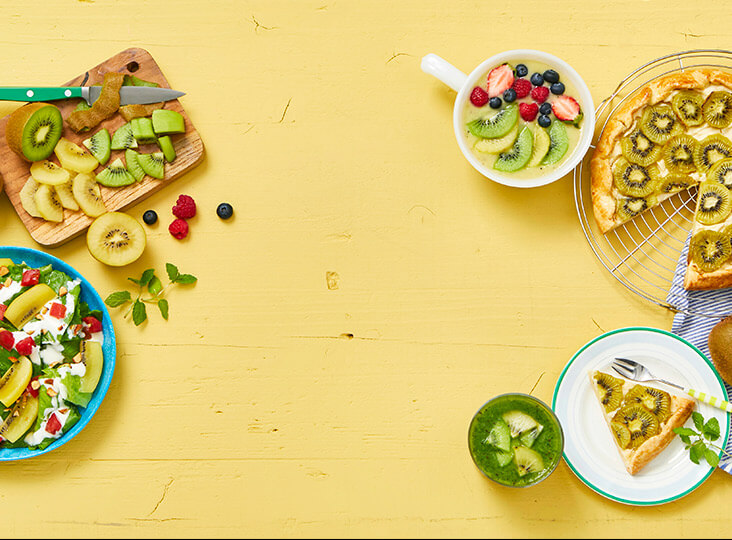KIWIFRUIT AND MANGOS: SIMILARITIES AND DIFFERENCES
-
Did You Know
-
Health & Lifestyle
Kiwifruit and bananas — nutritional twinsies!
Kiwifruit and mangos . . . Kissing cousins?
On paper, they live very similar lives. Both have multiple varieties. Both are naturally sweet. And both are considered a superfruit — bursting with antioxidants, vitamins and minerals, such as vitamin A, vitamin C, folate, fiber and much more. Some folks even feel that SunGold™ Kiwifruit have the slight taste of mango in its flavor profile. Exactly how similar are they? And what are the differences between mangos and kiwifruit?
Nutritional Similarities Between Kiwifruit and Mangos
Looking at the nutritional value of mangos and kiwifruit, it’s easy to see why we like to call them “cousins.”
• Delivers a healthful dose of life-enriching vitamin C
• Excellent source of fiber
• Good source of potassium
• Low cal
• No fat
• No sodium
And both mangos and kiwifruit have enzymes that aid in the breakdown and digestion of protein.
Fun Tip: Use ZespriTM Kiwifruit as a meat tenderizer or make a healthful marinade for your steak or pork.
Kiwifruit and Mangos Nutritional Values at a Glance
| Mango — one cup serving* (about 165 grams) | Zespri Green — one cup serving (2 medium kiwifruit, 148 grams) | SunGold — one cup serving (2 medium kiwifruit, about 162g) |
| 100 calories protein: 1 gram fat: 0 grams carbohydrates: 25 grams dietary fiber: 3 grams (12% DV†) potassium: 277 mg (7% DV) sodium or cholesterol: 0 vitamin C: 100% DV vitamin A: 35% DV vitamin E: 0% DV | 90 calories protein: 2 gram fat: 0 grams carbohydrates: 22 grams dietary fiber: 4 grams (16% DV) potassium: 460mg (13% DV) sodium or cholesterol: 0 vitamin C: 230% DV vitamin A: 0% DV vitamin E: 10% DV | 110 calories protein: 2 gram fat: 0 grams carbohydrates: 26 grams dietary fiber: 2 grams (8% DV) potassium: 460mg (13% DV) sodium or cholesterol: 0 vitamin C: 430% DV vitamin A: 0% DV vitamin E: 10% DV |
| * Nutritional data taken from USDA Nutritional Database † Daily Value, as recommended by the Food and Drug Administration (FDA) | ||
Nutritional Differences Between Kiwifruit and Mangos
Both fruits provide a great deal of vitamin C. But the mango simply can’t compete with the sheer amount of vitamin C delivered by a single serving of Zespri Kiwifruit. Compare the mangos 100% daily intake value of vitamin C with the 230% from a serving of ZespriTM Green kiwifruit — and a whopping 430% from ZespriTM SunGoldTM! Talk about powerful!
Mango and kiwifruit are both good sources of potassium. That’s good for enhancing muscle strength and water balance as well as boosting metabolism. But Zespri™ Kiwifruit provides twice as much potassium as its mango cousin.
Another major difference between the two fruits, however, is their fiber. Kiwifruit and mangos have roughly the same dietary fiber content. But kiwifruit shines in this category because it is one of the only fruit enriched with both soluble and insoluble fiber. Insoluble fiber cannot be absorbed by the human body, nor dissolved by water. Instead, insoluble fiber passes through the body, which helps your digestive system run velvet smooth.
Read more about how kiwifruit’s actinidin and fiber content can help with digestion at our article,FODMAP: Zespri Kiwifruit, Gut Health and You!
But What About the Taste?
Taste is subjective. But you can typically expect a tropically sweet flavor from mangos. You might find it’s a cross between a pineapple and an orange but without the acidity of an orange. Some mango varieties also have a splash of a peach aftertaste, with a slightly tart kick to them.
With this flavor profile, you can see how it’s reminiscent of kiwifruit. ZespriTM Green has that tart kick while ZespriTM SunGoldTM is often described as “tropically sweet.” In fact, some people — ourselves included — will often describe SunGold™ Kiwifruit as tasting a cross between a mango and a strawberry.
